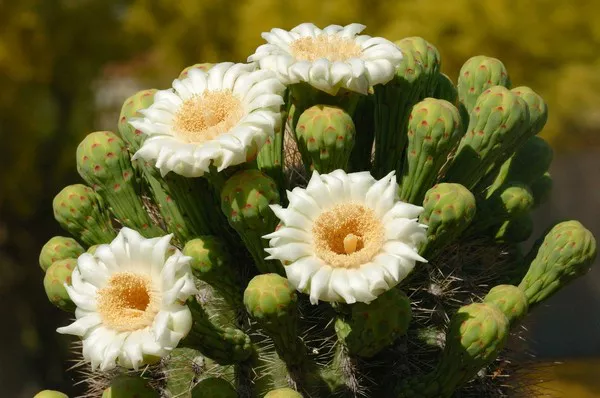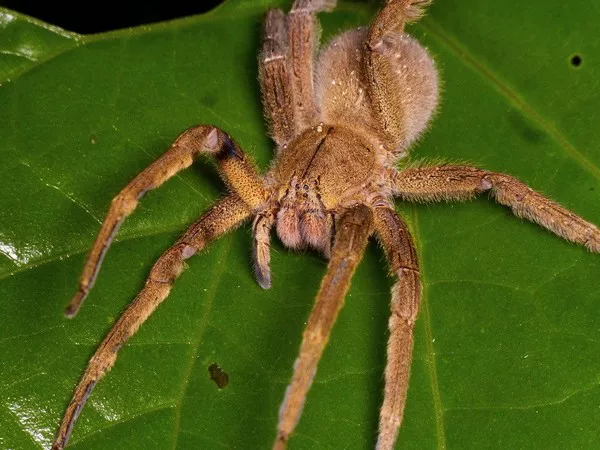Deserts, characterized by harsh arid conditions, are not barren landscapes devoid of life. Instead, they are home to a remarkable array of plant life that has evolved ingenious strategies to thrive in extreme environments. In this comprehensive exploration, we uncover the 10 most common desert plants, delving into their adaptive features, ecological significance, and the fascinating science behind their ability to flourish in some of the world’s most challenging habitats.
10 Most Common Desert Plants
1. Saguaro Cactus (Carnegiea gigantea):
The iconic Saguaro cactus, a symbol of the American Southwest, stands tall as one of the most distinctive desert plants. Endemic to the Sonoran Desert, these giants can reach towering heights of up to 40 feet (12 meters). The Saguaro’s ability to store vast amounts of water in its accordion-like accordion pleats enables it to survive prolonged periods of drought. Studies have shown that these cacti play a crucial role in providing habitat for various desert fauna, making them a keystone species in their ecosystems.
2. Joshua Tree (Yucca brevifolia):
Gracefully silhouetted against the arid landscape of the Mojave Desert, the Joshua Tree is a hardy succulent equipped to withstand the desert’s challenges. Its unique branching structure, reminiscent of outstretched arms, has earned it its distinctive name. Research indicates that Joshua Trees have a symbiotic relationship with yucca moths, where the moths pollinate the tree while laying their eggs in its flowers. This intricate ecological dance showcases the interdependence of desert flora and fauna.
3. Creosote Bush (Larrea tridentata):
The Creosote Bush, often called “Larrea,” dominates vast stretches of North American deserts, including the Sonoran and Mojave. Known for its distinct resinous aroma, this evergreen shrub has adapted to arid conditions by developing long taproots to access water deep within the soil. Studies have demonstrated that Creosote Bushes release allelopathic chemicals into the soil, inhibiting the growth of nearby competing plants—a strategic survival tactic in water-scarce environments.
4. Barrel Cactus (Ferocactus):
Barrel cacti, belonging to the genus Ferocactus, are cylindrical succulents characterized by their round, ribbed bodies. These desert dwellers are adept at water storage, with some species capable of holding hundreds of gallons of water. Research has shown that barrel cacti utilize crassulacean acid metabolism (CAM) photosynthesis, a water-conserving process that allows them to open their stomata at night to minimize water loss. This adaptation is key to their survival in arid environments.
5. Desert Marigold (Baileya multiradiata):
The Desert Marigold, with its vibrant yellow flowers, is a common sight in North American deserts. This perennial plant has evolved to thrive in sandy, well-drained soils. Studies indicate that the Desert Marigold employs a deep taproot system to access water stored in the lower layers of the soil, ensuring its survival during dry spells. Its bright blooms not only add a splash of color to the desert landscape but also provide nectar for pollinators.
6. Ocotillo (Fouquieria splendens):
The Ocotillo, native to the Chihuahuan, Sonoran, and Mojave deserts, is a striking plant known for its slender, spiny stems. During dry periods, Ocotillos appear dormant, but when rainfall occurs, they undergo a remarkable transformation, sprouting vibrant leaves and vivid flowers. Research suggests that the Ocotillo’s ability to quickly respond to rainfall is an adaptive strategy to maximize photosynthesis during favorable conditions, emphasizing the dynamic nature of desert flora.
7. Agave (Agavaceae):
Agaves, a diverse group of succulents, are well-adapted to arid environments across North and South America. These plants have evolved a rosette growth form with thick, fleshy leaves that store water efficiently. Research highlights the importance of agaves in supporting biodiversity, as they provide habitat and sustenance for various species, including bats that rely on agave flowers for nectar. The versatility of agaves is showcased by their historical and contemporary uses by human populations, from food and fiber to distilled spirits.
8. Prickly Pear Cactus (Opuntia):
The Prickly Pear Cactus, belonging to the genus Opuntia, is a resilient desert plant known for its flat, paddle-shaped stems adorned with glochids—tiny, hair-like spines. Studies indicate that these cacti play a crucial role in preventing soil erosion in desert ecosystems. The pads of the Prickly Pear are also edible, and its fruits, known as tunas or prickly pears, provide a valuable food source for both wildlife and humans. Their adaptability and ecological contributions make them a cornerstone of many desert ecosystems.
9. Palo Verde Tree (Parkinsonia):
Palo Verde trees, native to the Sonoran and Mojave Deserts, are known for their green bark and finely divided leaves, an adaptation to reduce water loss through transpiration. Research has shown that Palo Verde trees engage in a unique strategy called drought deciduousness, wherein they shed their leaves during periods of extreme dryness to conserve water. Their ability to thrive in arid conditions while providing shade for other desert plants underscores their significance in desert ecosystems.
10. Yucca (Asparagaceae):
Yuccas, members of the Asparagaceae family, are emblematic of arid landscapes across North and Central America. Characterized by their sword-like leaves and towering flower spikes, yuccas have evolved a mutualistic relationship with yucca moths. Studies reveal that the yucca moth, the exclusive pollinator of yucca flowers, lays its eggs inside the flowers, ensuring the plant’s reproduction. This intricate dance between yuccas and yucca moths highlights the delicate balance that exists in desert ecosystems.
See Also: You May Not To Know:10 Best Indoor Plants
Conclusion:
As we traverse the sun-baked landscapes of deserts, the resilience and adaptability of the 10 most common desert plants become evident. From the towering Saguaro cactus to the versatile Prickly Pear, each plant has evolved unique strategies to thrive in environments where water is a precious commodity. The scientific insights into their adaptations and ecological roles underscore the intricate relationships that define desert ecosystems. These plants, often overlooked in their arid realms, stand as guardians of life, showcasing the beauty and biodiversity that persist in some of the harshest environments on Earth.
You Might Be Interested In:























